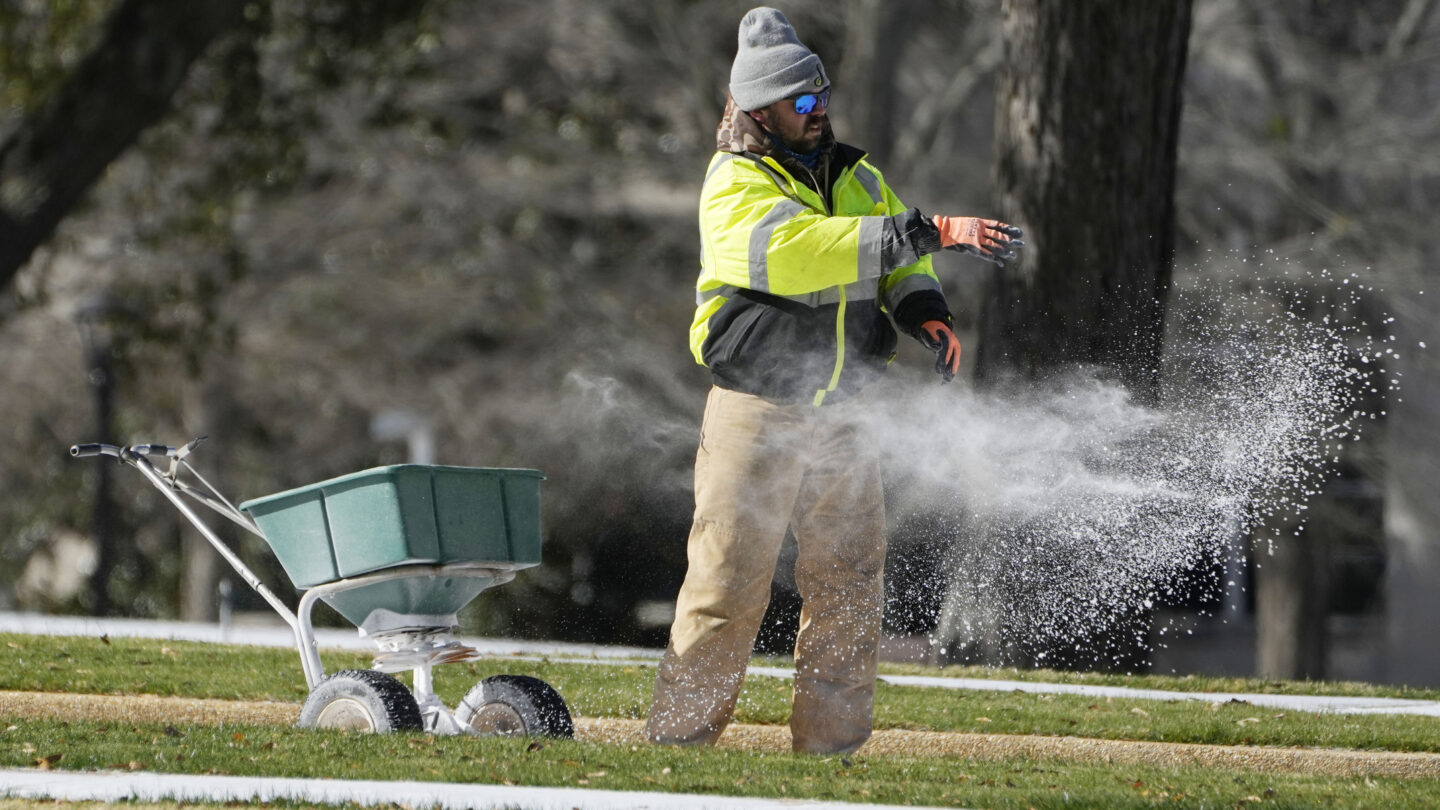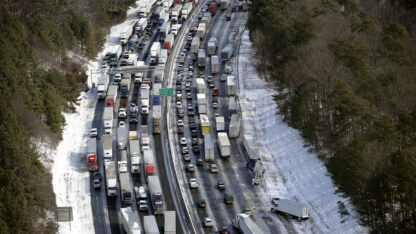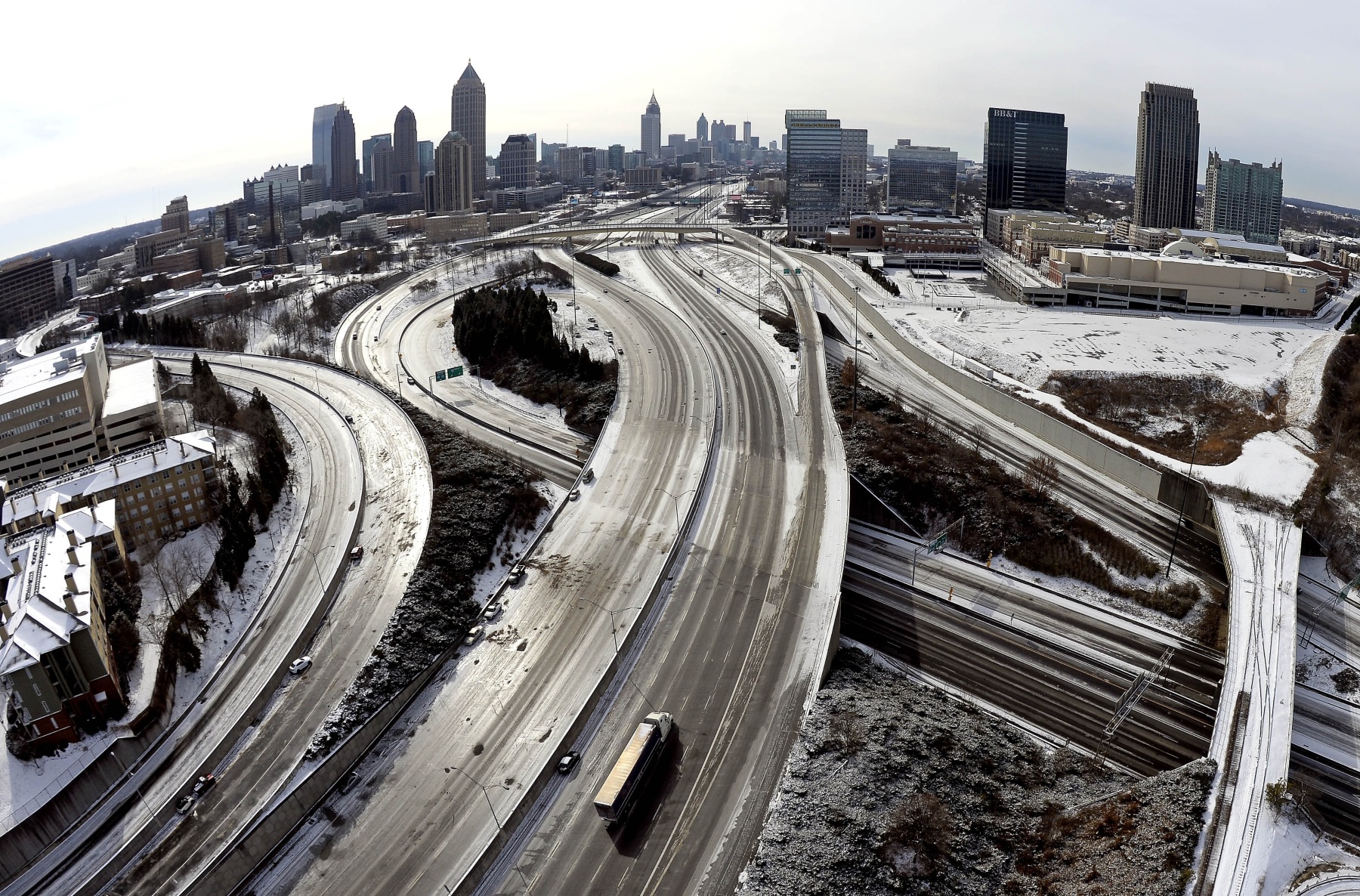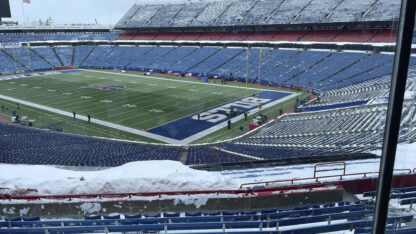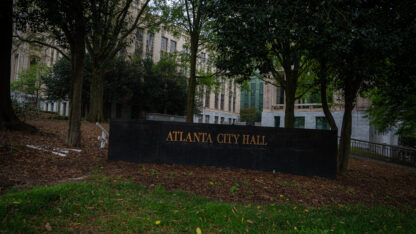Residents of the Pacific Northwest suffered more misery as an ice storm bore down Wednesday, threatening to turn mountain highways treacherous and zap power in bitterly cold temperatures.
Much of the region was under an ice storm warning through the morning, promising only to add to the damage brought by a powerful winter storm that hit over the weekend.
Parts of southwest Washington and western Oregon — including the latter state’s largest cities of Portland, Salem and Eugene — expected a quarter-inch to an inch (6 to 25 millimeters) of ice, while freezing rain was forecast in the Seattle area.
Schools were closed, bus service was curtailed and warming shelters opened while officials warned of bad roads and the chance of new power outages, even as crews struggled to restore electricity to thousands of customers blacked out for days.
The forecast came as much of the United States copes with bitter weather that in some places put electricity supplies at risk. Another day of bitter temperatures swept much of the Rockies, Great Plains and Midwest, with wind chills below minus 30 (minus 34.4 Celsius) extending into the mid-Mississippi Valley.
Freezing temperatures spread as far south as North Florida on Wednesday morning, said Bob Oravec, a forecaster at the National Weather Service. It was 12 degrees (minus 11.1 Celsius) early Wednesday in Atlanta, where thousands of students were just returning to school after several of Georgia’s largest school systems closed Tuesday as icy weather threatened the region.
It was 5 degrees in Chicago (minus 15 Celsius) and 6 degrees (minus 14.4 Celsius) in Detroit, making both cities significantly colder than Alaska’s capital of Juneau, where it was 18 degrees (minus 7.8 Celsius). Some residents managed to find a bright side.
“It’s probably the most beautiful time in Chicago, ever,” Chicagoan Richard Wineberg said as he admired the snow-covered landscape.
New York and Philadelphia ended a drought of sorts with enough snow falling for play in both cities. Five people were struck and killed by a tractor-trailer on Interstate 81 in northeastern Pennsylvania after they left their vehicles following a separate crash on slick pavement.
Investigators were still determining the exact cause.
Heavy lake-effect snow was forecast in Buffalo, New York, with up to 4 inches an hour expected through the afternoon. City hall was closed, and school districts declared snow days. Travel bans were issued for several suburbs. The winter blast comes days after a storm that delayed an NFL playoff game for a day.
Just after sunrise Wednesday, Patrick Sahr shoveled snow from his car and driveway in Buffalo after at least 18 inches of new snow fell overnight — on top of 3 feet over the weekend.
“I just want to keep up with it,” he said during a lull.
In the South, the Tennessee Valley Authority, which provides electricity to seven states, asked customers to cut back, citing high demand because of the cold. A similar plea came from the grid operator in Texas. Over 90,000 customers lost power Wednesday at one point across a swath of the South, though the number fell to about 43,000 in Texas and Louisiana later in the day, according to PowerOutage.us.
In Oregon, transportation officials closed 47 miles (76 kilometers) of Interstate 84, a major east-west highway that runs from Portland through the Columbia River Gorge, due the threat of ice.
In the mountains, the National Weather Service warned of heavy snow in the Cascades with winds gusting to 50 mph (80 kph), mixed with freezing rain and ice that could make travel “very difficult to impossible.” A storm warning was up through Thursday afternoon.
More than 78,000 customers lacked power in Oregon early Wednesday.
The Pacific Northwest is more known for rain and wasn’t set to experience such arctic temperatures, but the heavily forested region is especially prone to the danger of falling trees and power lines, particularly during ice storms.
“We’re lucky to be alive,” said Justin Brooks, as he used a chain saw Tuesday to cut up two massive trees that narrowly missed his home in Lake Oswego, Oregon, on Saturday.
Elsewhere in Lake Oswego, arborist Ryan Cafferky scaled a towering tree to cut it down. The city had deemed the 120-year-old tree at risk of falling, he said.
In the Portland area, some two dozen commuter buses suspended service or were detoured since storms walloped the area a few days ago.
Snow and strong winds were blamed for at least seven deaths in the Pacific Northwest, including a man whose Lake Oswego house was struck by a tree and a woman who died when a tree crushed a recreational vehicle in Portland, trapping her and causing a fire, authorities said. Five people in Oregon were believed to have died of hypothermia, authorities said.
Warmer air was expected to provide some relief Wednesday.
However, the icy morning forecast led Portland Public Schools, the state’s largest district, to cancel classes for a second day, citing concerns about power, burst pipes, and unsafe walkways and parking lots. The suburban Beaverton School District also canceled Wednesday classes, noting some buildings still lacked power and heat.
Courts, libraries and parks were also closed in Portland and other parts of Multnomah County.
County officials extended a state of emergency until noon Wednesday and decided to keep a record 12 overnight weather shelters open for an additional night. Officials called for volunteers, citing the high demand for shelters in an area where thousands of people live outside.
“The real limitation for us right now is staffing,” said Dan Field, director of the county-city homelessness office. “We have to have enough people to keep the doors open of the emergency shelters.”
Associated Press writers Julie Walker in New York City and Carolyn Thompson in Buffalo, New York, contributed to this report.
